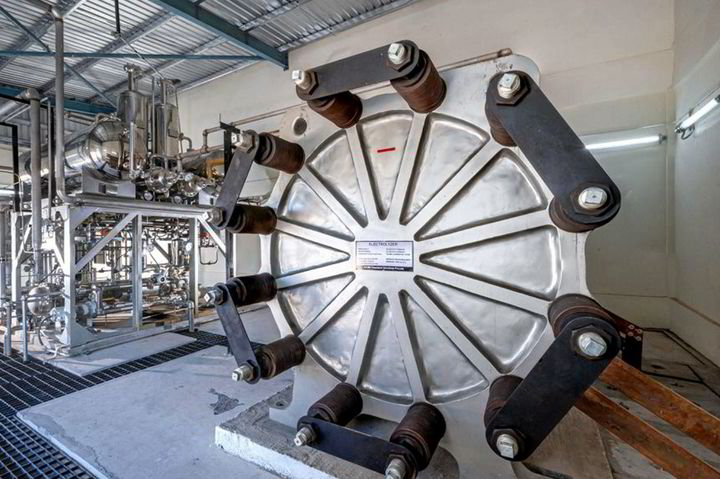India could produce second-cheapest green hydrogen in Asia by 2030: Wood Mackenzie

India’s high solar and wind potential could result in a levelised cost of hydrogen production of $4.30/kg by 2030 — “the second-lowest in Asia after China”, according to a new report by consultant Wood Mackenzie.
The report, titled Chance of a lifetime: Can India show the developing world a unique path to net zero?, cites “a relatively high solar irradiance (1,200-2,300 KWh/m2/year) and wind speeds (4-6 m/s)”, which a hybrid project could draw on to deliver cheap round-the-clock electricity for green H2 production.
However, Wood Mackenzie estimates that 125GW of new renewables would need to be installed in order to power the country’s five-million-tonnes-a-year green hydrogen production target for 2030.
This is in addition to the wind, solar, and hydropower capacity that would have to be deployed to reduce grid emissions, since although 43% of the country’s total power generation capacity is renewable, these only make up 22% of actual electricity output.
While India had budgeted 174.9bn rupees ($2.1bn) for H2 production subsidies over three years — which Wood Mackenzie notes will only reduce electrolysis costs by 10% — and exempted green hydrogen producers from grid transmission costs for 25 years, the report warns that the country is off-track to meet its 2030 target.
“We forecast that around 4 [million tonnes a year] of low-carbon hydrogen is likely to be operational by 2030, accounting for around 5% of global production,” Wood Mackenzie predicts, adding that “much more will be required” for the country to reach net zero by 2050.
Article continues below the advert
The research firm expects that India will need 55 million tonnes a year of clean hydrogen by 2050 to fully decarbonise, of which 35 million tonnes will be produced domestically and the rest imported.
Almost half of this, or 26 million tonnes a year, will go towards the power sector, while another 22 million tonnes will be used by industry, Wood Mackenzie forecasts. However, the research firm does not specify in the report where the remaining seven million tonnes of H2 will be used.
Within industry, the report notes that hydrogen could play a role in decarbonising India’s rapidly growing output of steel, cement, and petrochemicals such as plastics.
Wood Mackenzie adds that its net-zero scenario would require carbon prices in India to reach $154 per tonne of CO2 — around double current prices on the EU’s Emissions Trading System — “a major ask for a country infamously price-sensitive”.
However, the report notes that this high price will be needed to push companies to make investments in hydrogen and other climate measures “which might otherwise seem unviable due to high upfront capital costs”.
India launched its carbon credits market last year, which would cap the greenhouse gas emissions of companies in sectors such as oil refining, cement, iron and steel, and fertilisers while allowing credits for emissions below this cap to be traded.





